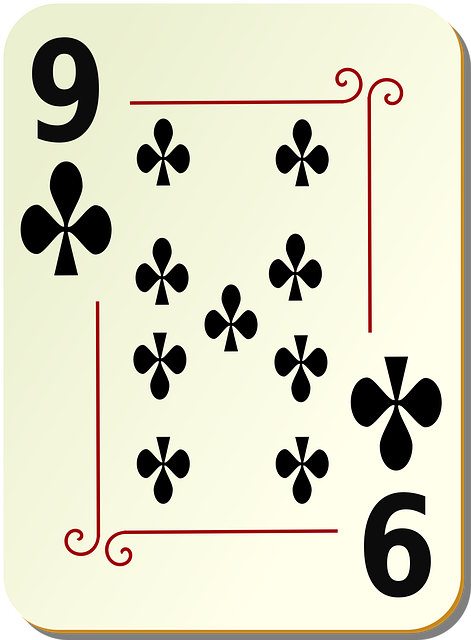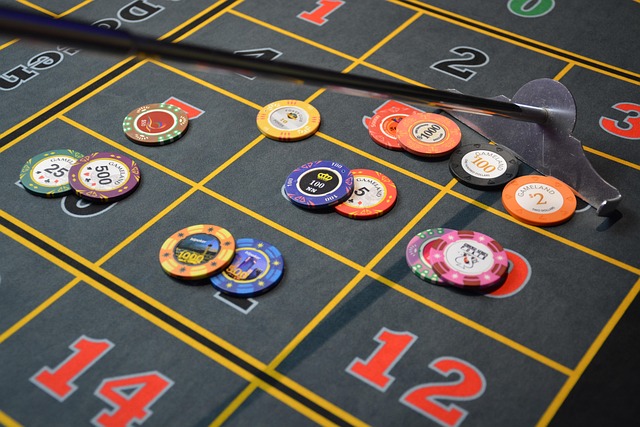Learn the fundamentals of poker, a global favorite, by understanding hand rankings, betting rounds, and strategic moves like bluffing and reading tells. Gather a 52-card deck, chips, and players for a game, with each player receiving equal chips. Deal cards face down, position players around a table, and choose a dealer randomly. Master key strategies including betting techniques, folding, and balancing aggression with patience to win.
Poker is a captivating card game that combines skill, strategy, and psychology. This guide will walk you through the fundamentals of poker, from its core rules to essential strategies. First, we’ll explore the basics: understanding poker’s gameplay and its key components—cards, chips, and players. Next, delve into playing strategies, including betting techniques, knowing when to fold, and mastering the art of winning. By the end, you’ll have a solid foundation on how to play poker.
- Understanding Poker: A Card Game Overview
- Setting Up: Cards, Chips, and Players
- Playing Strategies: Betting, Folding, and Winning
Understanding Poker: A Card Game Overview
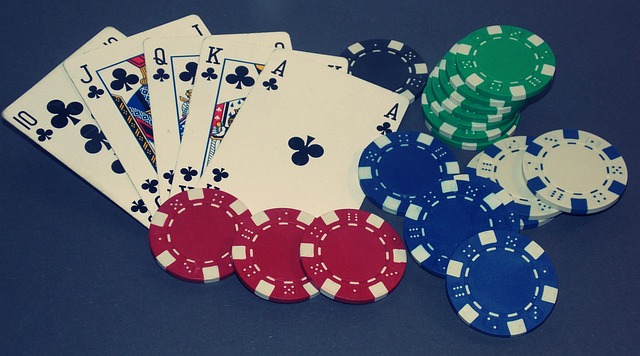
Poker is a competitive card game that has captivated players worldwide for centuries. At its core, it’s about strategic thinking, risk assessment, and outsmarting your opponents. The objective is simple yet intricate: win as many hands as possible by forming the best five-card combination according to poker rankings. These rankings, from highest to lowest, include Royal Flush, Straight Flush, Four of a Kind, Full House, Flush, Straight, Three of a Kind, Two Pair, One Pair, and High Card.
To play poker, each player is dealt a hand of cards, usually consisting of two downcards (hole cards) and five community cards (face-up cards shared among all players). The game proceeds in rounds, with betting intervals between them. Players have the option to check (pass), bet, raise (increase the bet amount), or fold (discard their hand and forfeit any bets). The player with the highest-ranked combination at the end of a round wins the pot, which is the cumulative amount wagered during that hand. Mastering poker involves learning various strategies, understanding odds, and developing skills to bluff effectively while reading your opponents’ tells.
Setting Up: Cards, Chips, and Players
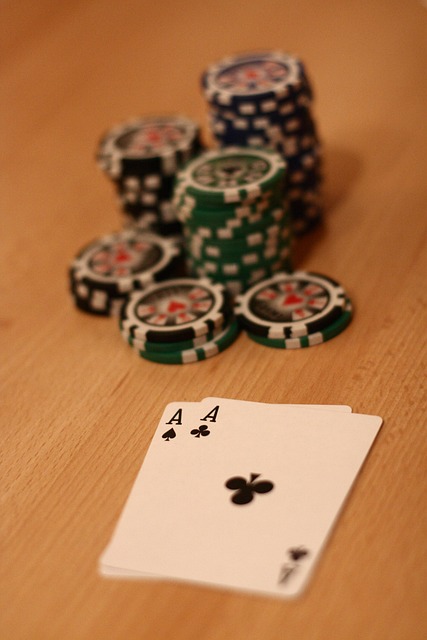
Poker is a captivating card game that involves skill, strategy, and a touch of luck. Before diving into the excitement, let’s break down the initial steps to set up a game, known as “Setting Up” in the world of poker. The first step is to gather the necessary tools: a standard deck of 52 cards and chips for betting. A typical poker game requires at least two players, but it can accommodate up to ten or more. Each player receives an equal number of chips, which serve as their currency during the game.
The cards are dealt face down, and players take turns positioning themselves around a table. The dealer, often determined randomly, distributes the cards according to the chosen poker variant. Common card games like Texas Hold’em or Omaha have specific rules regarding card dealing and hand formation. With the cards in hand, players can now strategize their moves, creating an engaging atmosphere filled with anticipation and the subtle sounds of chips being exchanged—a key part of how to play poker successfully.
Playing Strategies: Betting, Folding, and Winning
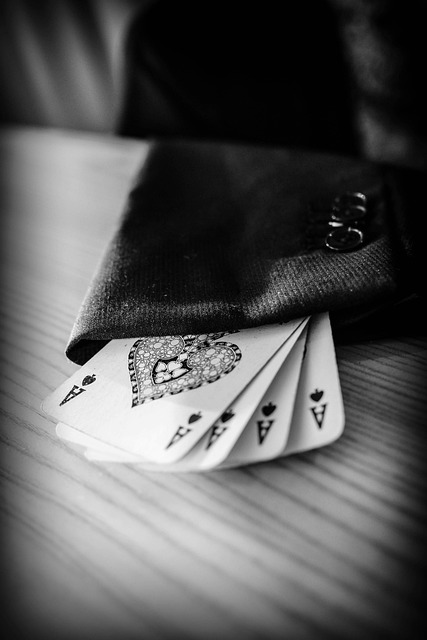
Playing poker involves mastering key strategies like betting, folding, and winning. Betting is a critical aspect where players wager chips based on the strength of their hand or their assessment of opponents’ cards. Effective betting includes understanding pot odds—the ratio of the size of the pot to the cost of a bet—to make informed decisions.
Folding is another crucial skill. It means discarding your hand and conceding defeat when the odds aren’t in your favor. This strategic move helps players conserve chips for stronger hands later. Ultimately, winning involves combining strong hands with judicious betting and folding strategies to outmaneuver opponents. How to play poker effectively hinges on balancing aggression and patience, continually reading your opponents, and adapting your strategy based on their plays.
Poker is a captivating card game that combines skill, strategy, and a touch of luck. By understanding the basics covered in this guide—from card rankings to betting rules—you can start your poker journey. Whether you’re a novice or looking to refine your skills, mastering playing strategies like betting techniques and knowing when to fold will enhance your experience. Remember, practice makes perfect, so gather your friends, set up the table, and dive into the exciting world of poker! Learn how to play poker effectively and who knows, you might just become the next big name in this captivating game.


